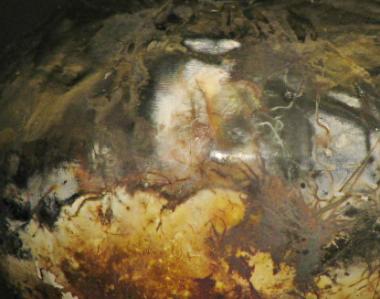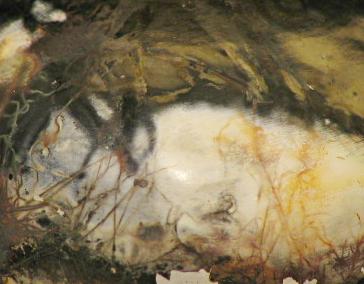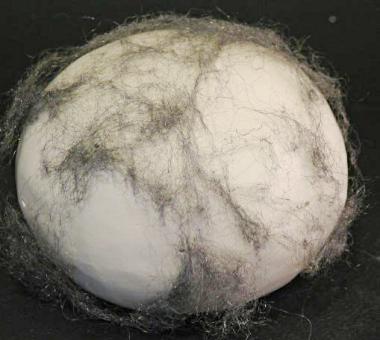One of the experiments I performed at the Vashon Island pit fire last month involved the use of steel wool as a fuming material. I was curious about steel wool because I had thought it was the cause for the beautiful colors on a very nice piece from my first pit firing back in 2002.

Well, I am still not sure — now that the experiment has been performed — if steel wool was behind the colors on that earlier piece, but as you can see in figure 1 above, the fuming of steel wool can certainly generate some truly wonderful color patterns on a receptive (i.e. terra sig coated and highly burnished) surface.

Here (figure 2 above) is a close-up of another part of the same steel wool-fumed surface. And yes, the surface (i.e. the terra sig layer) is flaking off near the bottom of the picture. But this has nothing to do with steel wool as such though — read my previous post on the topic to find out why it is flaking off.

Now, I had used steel wool a few times before, but the result typically consists of just a few patches of black or brown areas. But this time round I decided to separate the steel wool into really fine strands (figure 3 above) — and that made a big difference in the outcome!
By the way, the piece was packed with fuming materials in the usual way (starting with inner most layer):
- steel wool strands (thin, sparse)
- salted raffia (thin layer)
Also, as described in the post about the firing, there were plenty of other materials (e.g. horse dung, copper carbonate, baking soda) in the pit at the time of the firing, which quite possibly contributed to some of the colors we see here as well.